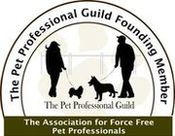Prepare Your Dog To Learn Better
Get into a Routine Preparing a dog to learn is established by creating a routine. Prior to training you want a focused, relaxed canine and a routine increases the bond and relationship you have with your dog. Whenever I prepare my dogs for a practice session or performance, I carefully craft a routine to ease us into the task. Since each dog is unique, each dog’s routine may be slightly different. The end result is the same, a calm, relaxed, focused dog, who is ready and eager to learn. After the routine is completed your dog will be ready to work better and harder. A training routine equals better performance. The dog isn’t the only part of the team. You need to be prepared as well by preparing your plan and being in the proper frame of mind. Here is an eight-step plan to get you started. - Start the routine in the "wait place" (i.e. car, truck, crate, xpen).
- As you bring dog out of "wait place" have fresh, cold water ready for drinking.
- Relax your dog with a method of training called Tellington Touch. This method consists of three things: bodywork (rubdown); leading exercises; obstacle coursework. Start with bodywork customized to your dog, his challenges and the performance. For instance the bodywork routine would be different for agility than for conformation. Go to www.tellingtontouch.com to learn more. Linda Tellington has several books to help you understand bodywork and obstacle coursework. I like to do cavelletti and cone work for conformation and labyrinth for focus and attention. These are easy to carry with me on the road and help make my dog aware of foot placement and posture/balance.
- Turn on some music, or soothing CD soundtracks for calm, relaxed atmosphere.
- Choose a notebook or journal as your training logbook. You can record sessions and/or plan sessions using this logbook.
- Keep a stack of dog-eared books as reference and guidance nearby. This will help you keep mentally alert and prepared and this confidence in what you are doing in your training session will relay back to the dog.
- Have cues for the dog, such as "Let’s play RallyO" or "ShowTime" or "Let’s go to work".
- Have the proper gear/equipment you’ll need in place and visible to your dog from the beginning. Search and rescue gear will be different from conformation or RallyO gear or hiking/backpacking equipment different from a leisurely walk in the park.
The stability of a routine prepares you and your dog for the task at hand. If you have a dog that easily gets over stimulated, then you’ll want to make sure this dog is calm, focuses, attentive and ready for the task at hand. If you have a dog that takes awhile to get into work mode, you’ll need to prepare and allow for this type of personality by stimulating them to work. The end result is you are in sync, working as a team and in partnership. Before you realize it, you’ll be working at your best. On the flip side, when the work is done, or the walk is completed, you should have a wind down ritual in place. Here is a three-step wind down plan. - Jot down notes in your journal. This will help you focus on weaknesses for next session and to enhance strengths striving for systematic progress.
- Create a reassuring atmosphere and routine for your dog to access their inner reservoir – that place deep within the dog he draws confidence and focus. Create an inviting ritual for both of you tweaking it until you find the perfect combination for peak performance and learning. Make the process as appealing as possible to your dog.
- Use a "done" cue when performance is at an end, and have a special something waiting to relieve the stress (i.e. Frisbee play, ball play, water and food, treats, going to a booth for a special buy).
Dogs learn easily by routines (structure) and patterns and begin to associate each ritual with what comes next. In a way you are preparing your dog to prepare him or herself for the task.
| 


